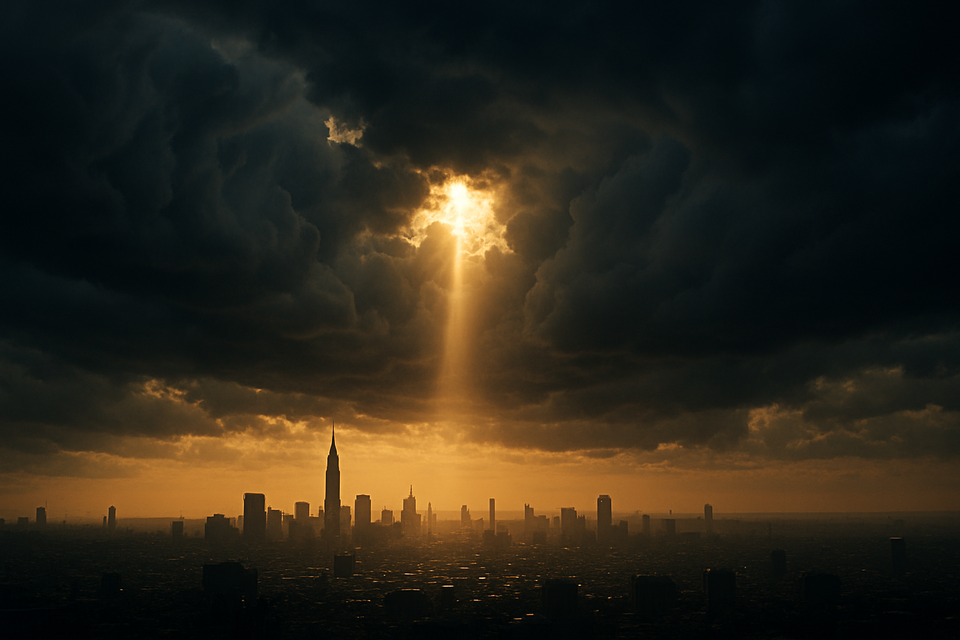Superman (2025): Strength in Vulnerability

Spoilers throughout for Superman (2025).
A New Beginning in Familiar Shadows
James Gunn’s Superman (2025) steps into a complicated inheritance. Nearly a century of comics, decades of cinematic memory, and the long shadow of Christopher Reeve all hover behind it; even the costume carries with it the weight of iconography. Gunn doesn’t try to sidestep any of that. Instead, he begins in the Arctic, in a landscape of ice and silence, where Superman is already wounded. The choice is striking: before the film establishes its villains, before it shows us the city he protects, it insists that this Superman can bleed. From the start we are asked to set aside the notion of invulnerability and watch a story where strength is measured less by perfection than by recovery, by the stubbornness to rise again.
Characters Recast, Worlds Reframed
The film surrounds this wounded figure with a cast that feels both familiar and deliberately re-anchored. David Corenswet’s Superman carries a physical presence closer to Reeve than Cavill, but his Clark Kent finally looks and feels like a disguise; the hypnoglasses gag may be a comic-book flourish, yet Corenswet leans into the difference with surprising conviction. Rachel Brosnahan’s Lois is already established as a partner rather than a distant love interest; her apartment, her arguments, and her interviews with Superman all signal a relationship that is lived-in, not tentative. Nicholas Hoult’s Lex Luthor is introduced less as a businessman in a suit than as a manipulator in control of systems, playing with power the way others play computer games. Even the supporting figures — the Justice Gang with their mixture of mythic and oddball energy, Krypto padding in as comic relief, the Pentagon officials wary of unchecked strength — are given roles that tell us something about the film’s vision of Superman. Gunn isn’t spending time on introductions; he trusts the audience to recognize these figures and instead shows us how they function within this world.
Images That Soar
If the story grounds Superman in vulnerability, the images lift him into myth. Gunn has said he studied Top Gun to shape the film’s aerial sequences, and the influence is obvious: when Superman cuts through the sky, the camera doesn’t float behind him in weightless glide but follows with a sense of velocity, banking and roaring as though the air itself has resistance. These flights carry the thrill of speed without losing clarity of movement; we see him fight the wind, we feel the world turning beneath. The same care extends to the Fortress of Solitude. Its crystalline halls still echo the Reeve films, but here they hum with additions that make the space both sacred and practical. Robots tend to him, mechanical lenses concentrate sunlight, and the recordings of his Kryptonian parents loop like lullabies. Nostalgia is present, but not embalmed; Gunn builds a fortress that feels inherited, lived in, and evolving, a reminder that even icons need maintenance and repair.
The Strange as Everyday
That same mix of reverence and play carries into the film’s treatment of its creatures. Gunn introduces monsters not as singular events but as background texture, the kind of threats that pass almost casually through Superman’s days. A dimensional imp flickers in the corner of a Justice Gang battle; a small, grotesque creature swells into a giant and is dispatched almost as soon as it becomes frightening. Even the sillier touches — Superman stooping to rescue a squirrel amid collapsing chaos — are framed without irony. These moments risk absurdity, yet they underline a crucial point: in this world, the bizarre is commonplace, the miraculous is daily labor. By refusing to linger on every oddity, Gunn gives the film a texture closer to the comics themselves, where gods, aliens, and imps are not disruptions but part of the weather. The result is a universe that feels lived-in, eccentric, and strangely credible in its excess.
Stakes in the Sky
The spectacle, too, finds its footing in this balance between the colossal and the immediate. Modern effects give Gunn the tools to stage battles across rifts, pocket universes, and collapsing skies, yet he resists the weightless abstraction that often plagues superhero clashes. The fights with Ultraman land because they are staged with consequence: nanites threading into Superman’s lungs, the absence of a sun leaving him weakened, the sheer physical toll of dragging combat into space and back again. These sequences are visually immense but never remote; the camera keeps us oriented, the cuts preserve continuity, and the effects serve story rather than overwhelm it. In a genre where escalation often numbs, Gunn finds ways to make each blow matter. The battles don’t just look large — they feel costly, which makes them surprisingly approachable, even intimate, for a character who has too often been trapped behind the glass of perfection.
Music in Restraint
If Gunn’s name conjures visions of needle drops and ironic counterpoint, Superman arrives as a quieter composition. The soundtrack is present — bursts of energy on the beach base raid, a few sly winks in background cues — but the wall-to-wall pop culture playlist of Guardians of the Galaxy is absent. Even Peacemaker, with its hair-metal swagger, feels louder by comparison. Here, Gunn seems intent on restraint. The orchestral score leans toward homage, echoing the grandeur of John Williams’ original themes without direct quotation, swelling at moments of flight or rescue to remind us that this Superman belongs to a longer lineage. The effect is striking: rather than bending the character to Gunn’s signature mixtape style, the film adapts its music to honor a hero defined by universality, not subculture. It breathes more deeply, guided as much by pauses as by symphonic surge, allowing the tone to feel reverent without losing modern momentum.
Themes of Humanity and Hubris
Beneath the spectacle, Gunn anchors the film in themes of vulnerability and responsibility. This Superman is defined less by invincibility than by limits — his body failing under kryptonite, his lungs invaded by nanites, his recovery tethered to sunlight. Again and again the film reminds us that strength is not the absence of weakness but the courage to keep moving within it. Opposite him stands Lex Luthor, less a cackling villain than a chillingly familiar figure: a man enthralled by technology, convinced of his own genius, indifferent to the cost. His willingness to gamble with lives, to court apocalypse in pursuit of control, feels less like fantasy than a reflection of real-world hubris among billionaires who treat progress as a game. Their conflict reframes Superman’s greatest power as not his fists or his flight, but his humanity — the insistence that choices and compassion, not conquest, define who we are.
Flaws and Risks
Not every choice lands cleanly, and some will divide audiences sharply. Gunn’s tonal variety — the squirrel save, Krypto bounding through battles, throwaway monsters dispatched in seconds — risks tipping into parody, especially for those who prefer their Superman untouchable. The physics, too, stretch past reason: freezing a blackhole makes little sense, and the sudden cure from nanites feels less earned than willed. Yet this isn’t entirely new; Superman has always lived with impossible physics, from reversing time in Donner’s original to the comic-book absurdities that shaped him. The greater risk lies in Gunn’s bold reframing of Krypton itself — suggesting that Kal-El was sent to rule, not simply to survive. For purists, this may feel like betrayal. For others, it may be the jolt that keeps the mythology alive. In any case, the film’s flaws are not hidden; they are part of its gamble, and whether one sees recklessness or vitality may determine how the whole plays.
Strengths and Stumbles
Even with those risks, the film largely succeeds at its balancing act. The spectacle feels modern without becoming abstract; the characters register as human beings rather than archetypes; the humor lightens without undercutting. Most importantly, the film finds a way to give Superman real stakes — something too many earlier versions struggled to maintain. By anchoring grandeur in vulnerability, Gunn delivers a story that feels both mythic and approachable, reverent and alive. It is not flawless, but it is persuasive, and that may be the rarer triumph.
A Superman for Now
For all its risks — and they are significant, from reframing Superman’s Kryptonian origins as a mission of domination to inserting creatures that flirt with absurdity — Gunn’s Superman emerges as one of the most convincing attempts to revitalize the character in decades. It remembers the myth but refuses to fossilize it, finding ways to keep both flight and fall compelling. The film will no doubt divide audiences on questions of canon and intent, yet its heartbeat is steady: a portrait of a man whose greatest power is not perfection but compassion. On balance, it is a triumph, a film that earns its place in the lineage it so carefully invokes. Strongly recommended; a solid four stars on our scale.



Comments ()